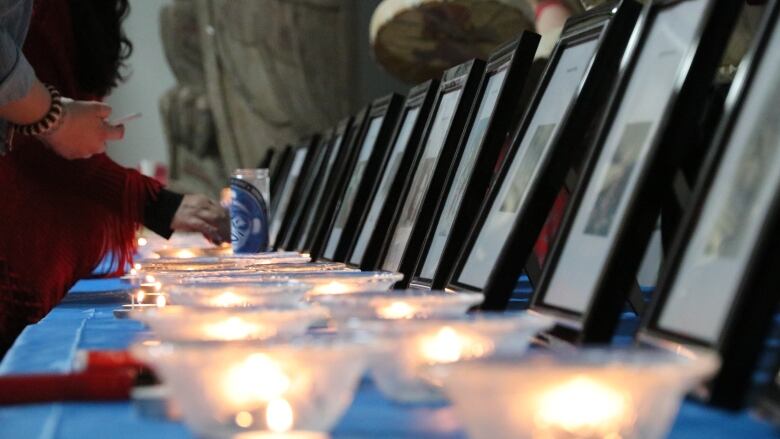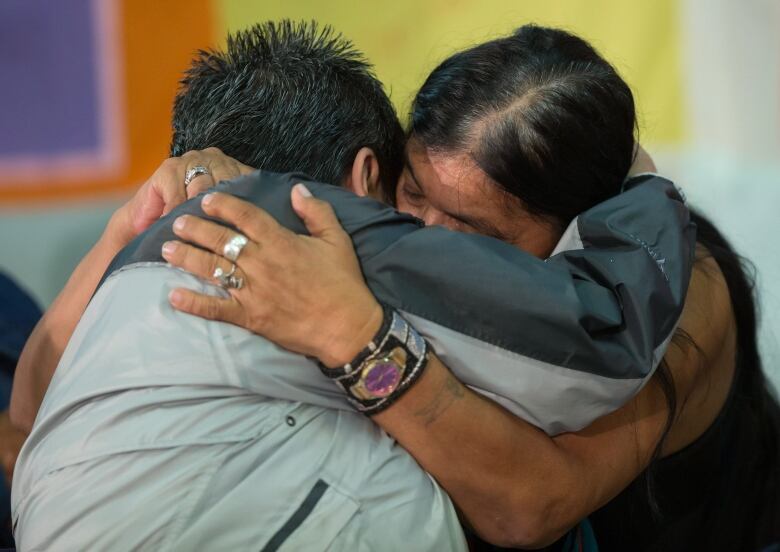Still no way to tell how many Indigenous women and girls go missing in Canada each year
StatsCan and some major police forces do not track missing Indigenous women

Even after the launch of a $53.8-million national inquiryand an increased focus on the issue, there is still no way to tell how many Indigenous women and girls go missing in Canada each year.
An informal CBC News surveyof national, provincial and municipal police forces across the country shows a patchwork approach to gathering and cataloguing information, with some agencies keeping track of the race, ethnicityor cultural affinity of murder victims but not of those who've gone missing.
"Unless we have this data, unless we have the numbers that are showing us what sort of trends are happening across this country ... we can't understand the reasons that our women are going missing," saidFrancyneJoe, president of the Native Women's Association of Canada.
Since 2005, her group has been pushingto draw attention to the high rates of violence against Indigenous women.
The most comprehensive numbers on missing Indigenous women still come from the RCMP's 2014 report Missing and Murdered Aboriginal Women: A National Operational Overview.
For that report, the RCMP collected files from Statistics Canada and 300 police forces across the country. It showed there were 164Indigenous women who were missing and 1,017 Indigenous women who had been murdered over the past 30 years.
An update in 2015 found 174 Indigenous women were missing, and 111 of those cases were considered to be under suspicious circumstances.
But those numbers aren't being updated every year, according to Byron Boucher, the RCMP'sassistant commissioner for contract and aboriginal policing.
"We can keep track of our own data, but we no longer have access to any of the other police forces' data. To do it again, we would have to go back to that same 300-plus police forces and ask permission to be able to do that," Bouchertold CBCNews.
'Not a crime to be missing'
For its part, Statistics Canada now requires all police services to report whether a homicide victim is Indigenous, according to Warren Silver, an analyst with the agency.
But police forces don't have to report missing Indigenous women to the national statistics agency.
"We don't have data on missing women," said Silver. "It's not a crime to be missing."
Since August2016, the RCMP has been using a new mandatory missing persons form that requires detailsabout the ethnic origin and cultural affinity of each person reported missing.
"I think it's something that we probably should have been doing a lot earlier," said Boucher. "The more information, the better."

However, Bouchersaid, the information is not being gathered to get a national picture of the problem.
"We're collecting itnot in terms of keeping it to determine a trend I think we already know, based on the 2014 report, what the issues are," said Boucher. "We're collecting it more to solve that particular issue around a missing person."
While the RCMP is increasing efforts to find missing Indigenous women, it patrols only 20 per cent of the population in Canada. The rest of the country falls under the jurisdiction of provincial, municipal and First Nations police forces. The RCMP and other forces don't co-ordinate the questions on their missing persons forms.
"I don't know exactly what other police forces are doing," said Boucher. "But we are happy to share anything that we are doing."
National database incomplete
Police forces across the country feed information into a searchable national police database, known as CPIC, that includes missing persons reports. But it's only as complete as the data provided.
CBCNewscontacted 16 municipal and provincial police forces across the country to see if they are taking the same approach as the RCMP in asking about the cultural affinity or ethnic origin ofmissing persons.
That informal survey revealed that provincial police forces inOntario, Quebec andNewfoundland and Labradorask questions to determine the race of the missing person.
It also found that 10of the larger municipal forces ask about race and some also ask about the cultural affinity of missing people. They are:
- Vancouver.
- Calgary.
- Regina.
- Winnipeg.
- Toronto.
- Montreal.
- Quebec City.
- Fredericton.
- Halifax.
- Charlottetown.
But three other big-city forces Edmonton, Saskatoon and Ottawa do not.
'Big gap'
Joe,of the Native Women's Association of Canada, calls the status quoa "disappointing" patchwork approach to tracking missing Indigenous women.
"We don't have the full picture there is a big gap, unfortunately," she said.
Joe said the solution is a national central database that can be used by all forces, which wouldhelp show where the problems are.
"Maybe we can understand why certain areas have a higher issue than other areas:Is it the urban centres? Is it northern communities? Is it on reserve? Is it off reserve?
"But until we have these tangible results, we are only guessing at this point."












_(720p).jpg)


 OFFICIAL HD MUSIC VIDEO.jpg)
.jpg)



























































































